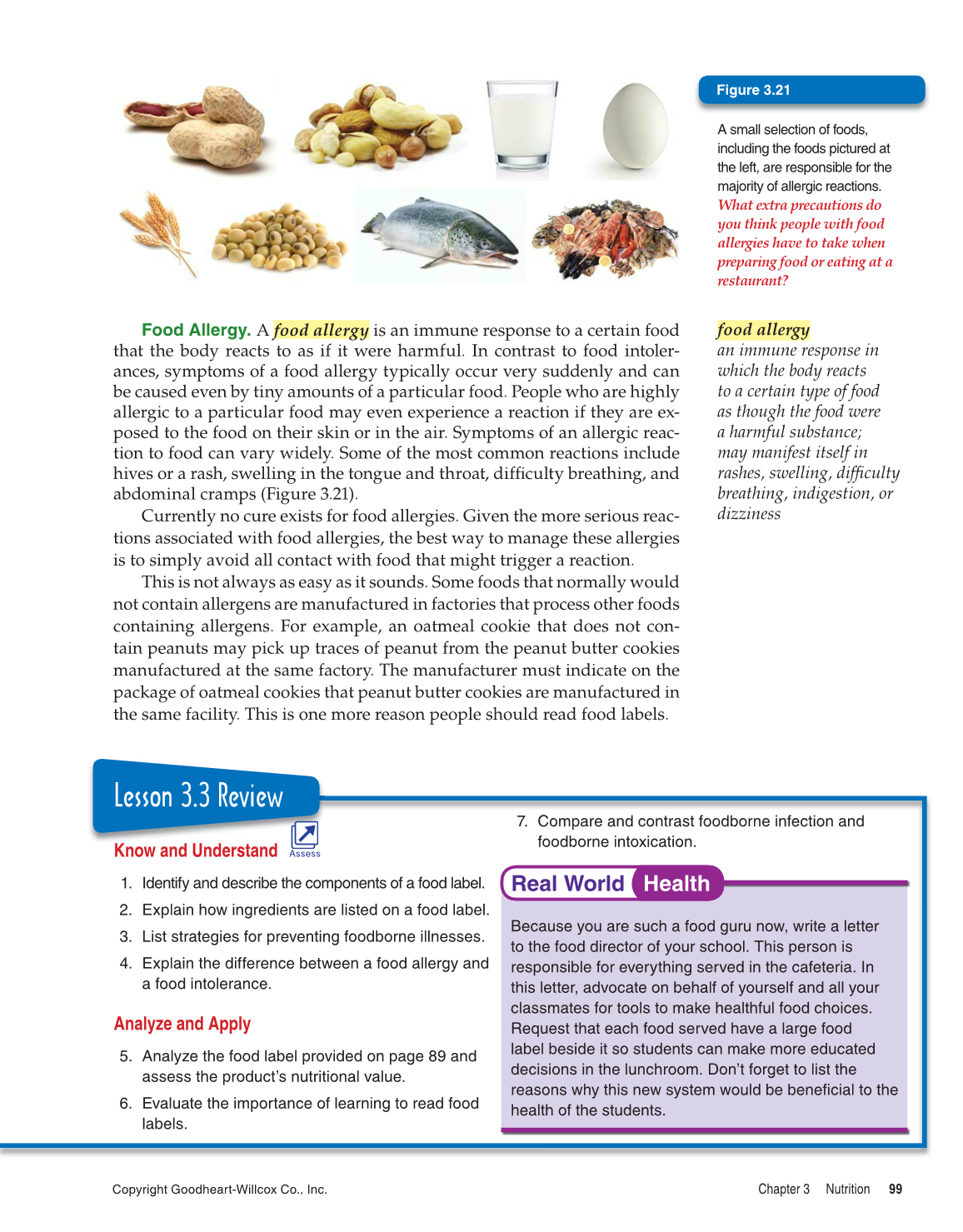Copyright Goodheart-Willcox Co., Inc.
Chapter 3 Nutrition 99
Food Allergy. A food allergy is an immune response to a certain food
that the body reacts to as if it were harmful. In contrast to food intoler-
ances, symptoms of a food allergy typically occur very suddenly and can
be caused even by tiny amounts of a particular food. People who are highly
allergic to a particular food may even experience a reaction if they are ex-
posed to the food on their skin or in the air. Symptoms of an allergic reac-
tion to food can vary widely. Some of the most common reactions include
hives or a rash, swelling in the tongue and throat, diffi culty breathing, and
abdominal cramps (Figure 3.21).
Currently no cure exists for food allergies. Given the more serious reac-
tions associated with food allergies, the best way to manage these allergies
is to simply avoid all contact with food that might trigger a reaction.
This is not always as easy as it sounds. Some foods that normally would
not contain allergens are manufactured in factories that process other foods
containing allergens. For example, an oatmeal cookie that does not con-
tain peanuts may pick up traces of peanut from the peanut butter cookies
manufactured at the same factory. The manufacturer must indicate on the
package of oatmeal cookies that peanut butter cookies are manufactured in
the same facility. This is one more reason people should read food labels.
A small selection of foods,
including the foods pictured at
the left, are responsible for the
majority of allergic reactions.
What extra precautions do
you think people with food
allergies have to take when
preparing food or eating at a
restaurant?
Figure 3.21
food allergy
an immune response in
which the body reacts
to a certain type of food
as though the food were
a harmful substance;
may manifest itself in
rashes, swelling, diffi culty
breathing, indigestion, or
dizziness
Lesson 3.3 Review
Know and Understand
1. Identify and describe the components of a food label.
2. Explain how ingredients are listed on a food label.
3. List strategies for preventing foodborne illnesses.
4. Explain the difference between a food allergy and
a food intolerance.
Analyze and Apply
5. Analyze the food label provided on page 89 and
assess the product’s nutritional value.
6. Evaluate the importance of learning to read food
labels.
Because you are such a food guru now, write a letter
to the food director of your school. This person is
responsible for everything served in the cafeteria. In
this letter, advocate on behalf of yourself and all your
classmates for tools to make healthful food choices.
Request that each food served have a large food
label beside it so students can make more educated
decisions in the lunchroom. Don’t forget to list the
reasons why this new system would be benefi cial to the
health of the students.
Real World Health
7. Compare and contrast foodborne infection and
foodborne intoxication.
Assess
